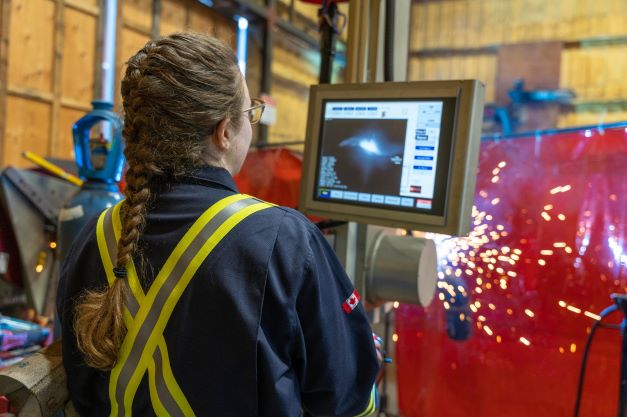In the ever-evolving landscape of industrial processes, the fusion of digital technology with traditional methods has been a game-changer. One sector that has significantly benefited from this synergy is pipe welding. The marriage of digitalization and pipe welding has not only enhanced efficiency but has also brought forth a wave of innovations, transforming the industry in unprecedented ways.
1. Precision and Efficiency Through Robotics:
One of the most notable trends in pipe welding is the integration of robotics. Automated welding systems, equipped with advanced sensors and algorithms, ensure precision and efficiency in the welding process. These robotic systems can navigate complex pipe geometries, resulting in higher-quality welds and reduced material waste. The use of robotics also addresses the challenges posed by hazardous environments, making it safer for workers. And, of course, we have to mention our Spool Welding Robot as an example here.
2. Welding Information Management Systems:
Digitalization has paved the way for the development of Welding Information Management Systems (WIMS). These systems gather and analyze data from the welding process in real-time, providing valuable insights into parameters such as temperature, speed, and arc voltage. WIMS not only enhances quality control but also enables predictive maintenance, reducing downtime and improving overall productivity. Here is a great article on The Fabricator that goes over WIMS.
3. Augmented Reality (AR) in Welding Training:
The shortage of skilled welders is a longstanding challenge in the industry. Digitalization has brought about a solution through the use of Augmented Reality (AR) in training programs. AR applications simulate welding scenarios, allowing trainees to practice and improve their skills in a virtual environment. This not only accelerates the learning curve but also minimizes the risk associated with traditional hands-on training.
4. Internet of Things (IoT) in Welding Equipment:
The Internet of Things (IoT) has found its way into welding equipment, providing connectivity and real-time monitoring. Smart welding machines equipped with IoT capabilities can communicate with other devices on the factory floor, enabling seamless collaboration and data exchange. This interconnectedness enhances the overall workflow, allowing for more informed decision-making and proactive maintenance.
5. Cloud-Based Solutions for Data Management:
Managing vast amounts of welding data can be a daunting task. Cloud-based solutions have emerged as a reliable means of storing, accessing, and analyzing this data. Cloud platforms enable stakeholders to remotely monitor and manage welding processes, facilitating collaboration among teams spread across different locations. This not only improves efficiency but also promotes a more streamlined and integrated approach to project management. We have a version of cloud-based data management accompanying our Spool Welding Robot called NovSync. This helps you to track production and machine trends over time by giving you centralized and secure access to weld videos, daily reports, and data logs.
The impact of digitalization on pipe welding is undeniable, ushering in a new era of efficiency, precision, and safety. As the industry continues to embrace these technological advancements, the outlook for pipe welding appears promising. The trends and innovations discussed above represent a glimpse into the transformative power of digitalization in an industry that plays a crucial role in various sectors, from oil and gas to construction. As we move forward, it is clear that the synergy between digital technology and pipe welding will continue to shape the future of this vital industrial process.
